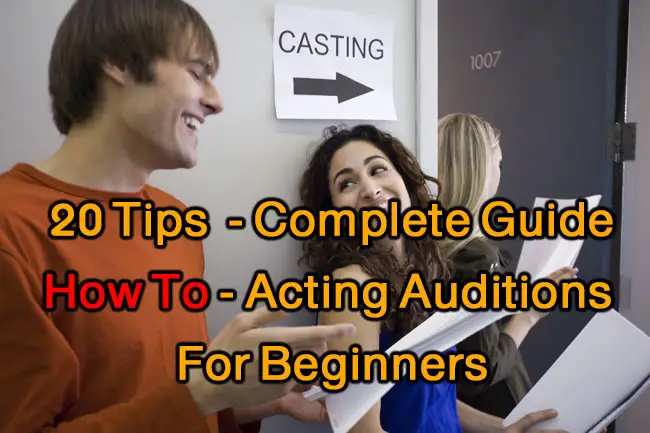
A good actor must learn and hone a variety of skills, one of the most important and sometimes hardest parts of acting is developing a strong and credible character.
This can be a confusing process for new players.
Table of Contents
11 Techniques The Actors Use To Create A Believable Character
The most important strategies for building a believable character are:
- Draw the initial characters.
- Understand the characters in the story.
- Practical Aesthetics.
- Give the characters occasional flaws and inconsistencies.
- Move away from cultural stereotypes.
- Make the characters change over time.
- Give each character their own voice and personality.
- Find out how to create credible characters from great authors.
- Be Ready.
- Take Time.
- Focus.
[1] – Draw The Initial Characters
A detailed overview of the character’s story will help you create a believable character. The sketches of the characters are in schematic form.
[2] – Understand The Characters In The Story
The goal is to know your character inside and out and to be able to believe in his inner stories, emotions, and myths.
Helping you to realize the uniqueness and personality character profile.
[3] – Practical Aesthetics
Developed by playwright and director David Mamet, this acting technique combines the teachings of Stanislavsky, Meissner, and the philosopher Epictetus.
The idea here is that the actors are immersed in the universe of the character for a more realistic representation.

Rose Byrne, Jessica Alba, William H. Massey, and Felicity Huffman are known for using this acting technique.
[4] – Create a Character Chart
Draw a chart that shows how the story characters feel throughout the story.
Drawing the ups and downs of your emotions will help you better visualize your character’s growth.
[5] – Learn To React
Acting is about reacting, so actors need to be fully aware of the situation and the other characters before reacting.
To make sure your character isn’t a stereotype, draft through a beta leader who is a member of the culture or subculture you want to play.
[6] – Be Truthful
Be honest and create a world on stage or screen that tells a story. The emphasis is always on telling the story exactly as the author intended it, in the most powerful and interesting way possible, and within the parameters of that world.
[7] – Complete Research and Notes
Discover the world of the characters by reading books and watching documentaries.
It may seem like you’re doing this in school, but it’s important to pay attention to details during rehearsals and performances they constantly come back with questions and thoughts about what they could have done to make it more realistic.
[8] – Do Performance With Full Confidence
Remember that you started doing performing arts for a reason. I wanted to get on stage and grab the audience’s attention as I told a story through words and movements.
Don’t let stage fright stop you from performing even if you have to get off the ground when you fall in front of an audience, it’s just about facing your fear and performing anyway.
[9] – Be Ready
If you don’t study your lessons, you won’t be ready and that will be reflected in your performance.
- Read the lines carefully and memorize them.
- It also puts you out of character.
- Read the script with the other cast members and do some serious rehearsals.
- Enjoy the process, of course.
[10] – Take Time
A breathtaking moment in that scene. Instead of just spitting out lines, take a moment to observe your surroundings and the other characters/actors in the scene.
Create and deliver what the scene and other actors offer. Take your time to accept everything and work out how your character reacts.
Think about how your character will react. You can give the casting director a vacation.
[11] – Focus
Pay attention to what is happening around you in that area. Be consistent with what other actors are saying. This allows them to react more naturally to the events around them.
But if you forget the lines or drop the props on stage, let’s move on. Life often puts us in order, so react naturally.
However, there are many techniques that help the actors lay the foundation for a well-developed character.
While performing a scene at an audition, an actor must make a decision. Strong decisions produce strong hearings.
Read the scene and point it at someone who knows the character, or think about what the characters think during the scene.
Conclusion
The more you rehearse, audition, and perform, the more comfortable and confident you feel in your own skin and that of your character.
You can use these tips to guide you in the direction of exhibiting a down-to-earth personality.
The most important thing is to decide what the purpose of the character in the scene is. It can and should guide your performance.

